Neck Pain in High Performance Horses
Sport horses must use their entire bodies in their sports activities, and the neck plays a vital role in movement, balance, and signal transfer to the rest of the body.
A horse’s neck is an extremely complex structure comprising over one hundred muscles, tendons, and ligaments that support and move seven large bony vertebrae.
They unite with each other in two places, one between the actual body of the vertebrae, cushioned by the intervertebral discs, and the other between the bony processes that extend along the top and the vertebral sides (the articular facet joints) .
The all-important spinal cord is protected when it passes through a channel in the middle of these vertebrae, and it works to transmit messages from the brain to the peripheral nerves that supply the rest of the body. The cervical nerves extend from the spinal cord, through openings in the side of each vertebral junction.
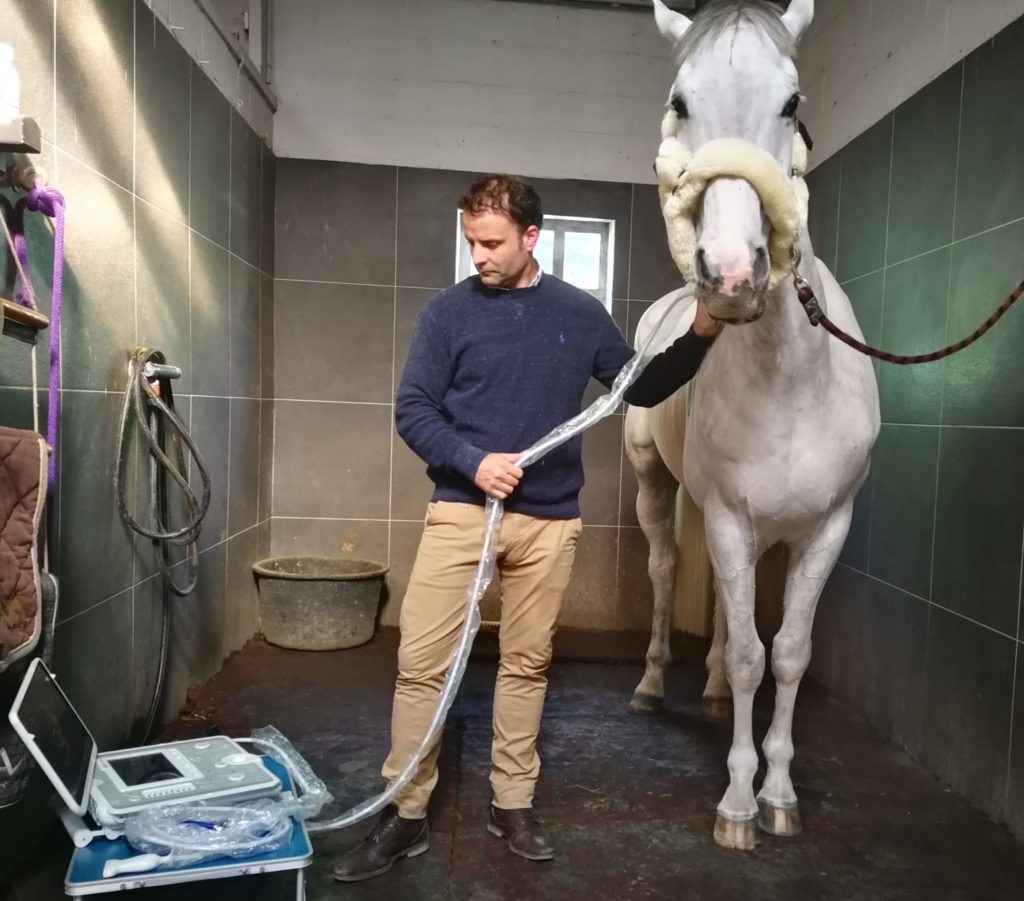
Neck Ultrasound Horse
The sixth, seventh, and eighth cervical nerves contribute to the brachial plexus, an intersection of all nerves supplying the forelimbs. Unfortunately, many things can go wrong with one or more of these important and fragile structures.
In general, neck or neck pain is observed to often occur in middle-aged performance horses and is common in athletes who need to recover or turn quickly (such as dressage horses, events, jumpers, polo horses, and performance horses. ). careers).
In these horses, neck pain can often be due simply to wear and tear that causes osteoarthritis in the articular joints between one or more vertebrae (the facets of the joints).
Neck pain is often presented as poor performance or a change in behavior that does not match a horse’s normal personality. Specific signs may include a difficult or poor attitude towards your job, a lesser willingness to extend / flex your neck, keeping your neck in a neutral or extended position, and sometimes a willingness to work in one direction but not the other. .
There are reports of horses experiencing a sudden reluctance or inability to raise their heads, only for this to be fully resolved in a period as short as several hours. In such cases, a nerve root can be pinched where it exits between the vertebrae, a problem that may recur if there is an underlying abnormality in the neck.
In some severe cases, horses are known to be bred, bent, or even bolted when asked to turn or flex their necks in a specific way. Horse and rider safety should be paramount when dealing with a horse with neck pain due to the unpredictability of the horse’s response to pain.
For Sport Horses Vet it is important to collect the full story when evaluating a horse for possible neck pain.
It should be remembered that approximately 7% of horses with cervical arthritis become ataxic (uncoordinated / wobbly). Ataxia most commonly occurs when there is some damage to the spinal cord.
This is normally due to narrowing of the spinal canal, instability of the bone vertebrae, or pressure of bone proliferation that can develop as a result of joint degeneration (osteoarthritis)
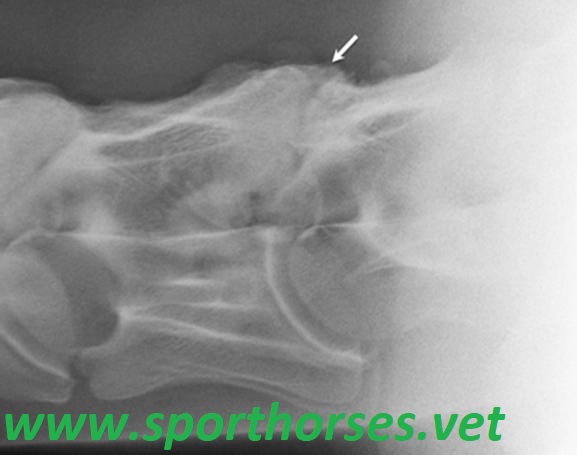
x-ray neck horses
In some cases, neck pain can cause a limp in the forelimb that cannot be eliminated by blocking nerves or joints. This may be due to pressure on the nerves that pass through the openings in the vertebrae to supply the forelimbs.
Pain that originates in the neck can also cause muscle discomfort, most commonly in the long brachiocephalic muscle that runs the length of the lower neck and acts to push the front legs forward (protraction).
After these examinations, it will often be necessary to use diagnostic imaging, such as radiography (X-ray), ultrasound, and / or nuclear scan (bone scan). One or a combination of these techniques will allow careful imaging of the bone and some of the soft tissue elements of the neck.However, careful interpretation of these images is important as estimates suggest that up to 50% of horses have radiographic facet joint abnormalities at C6-C7, but have no signs of clinical problems.
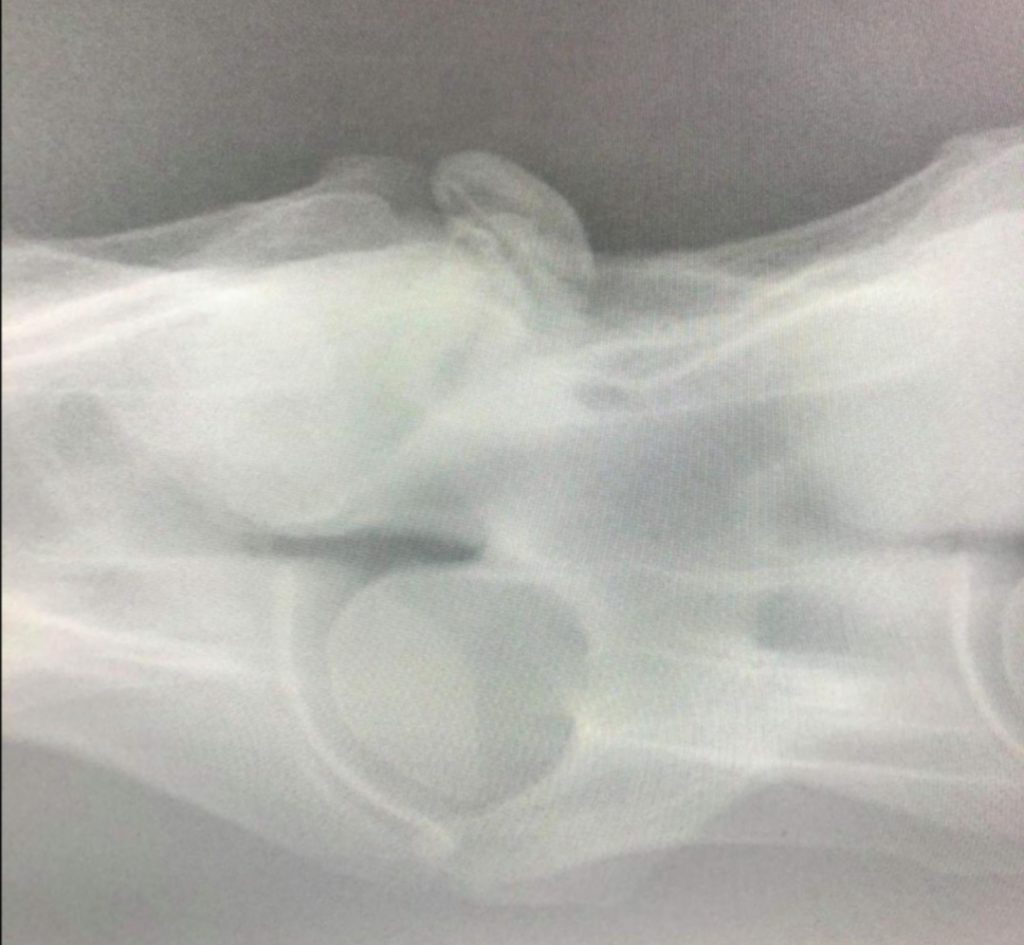
Neck x-ray in Horses
There are a variety of treatments for horses diagnosed with neck pain, including:
_Administration of non-steroidal anti-inflammatory drugs (phenylbutazone) to act as pain relievers and anti-inflammatories.
_Free time or modification in the workload of the horse / change in the type of work, either temporary or permanent, depending on the condition diagnosed and its severity.
_Cervical facet injections (precise placement of anti-inflammatory drugs, most often corticosteroids injected into the facet joints between the cervical vertebrae), are generally performed with ultrasound guidance and can be effective in removing neck related signs over a period of time at reduce inflammation and therefore pain
_Mesotherapy (injecting very small volumes of corticosteroids and local anesthetics into the mesodermal tissue just below the skin to reduce discomfort and improve the general range of motion)
_ Chiropractic adjustments – only by a trained professional
_ Shockwave therapy (desensitization effect)
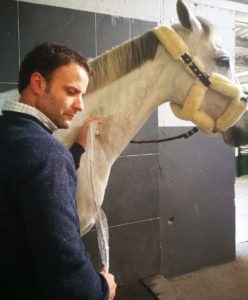
Neck Ultrasound Horse
While many horses with neck pain recover well from treatment, some injuries or conditions are too severe for a horse to return to its previous level of performance.
The prognosis and outcome for a horse diagnosed with osteoarthritis of the neck depends largely on how severe and advanced the changes in the joints involved are and the amount of damage / inflammation present in the soft tissues.








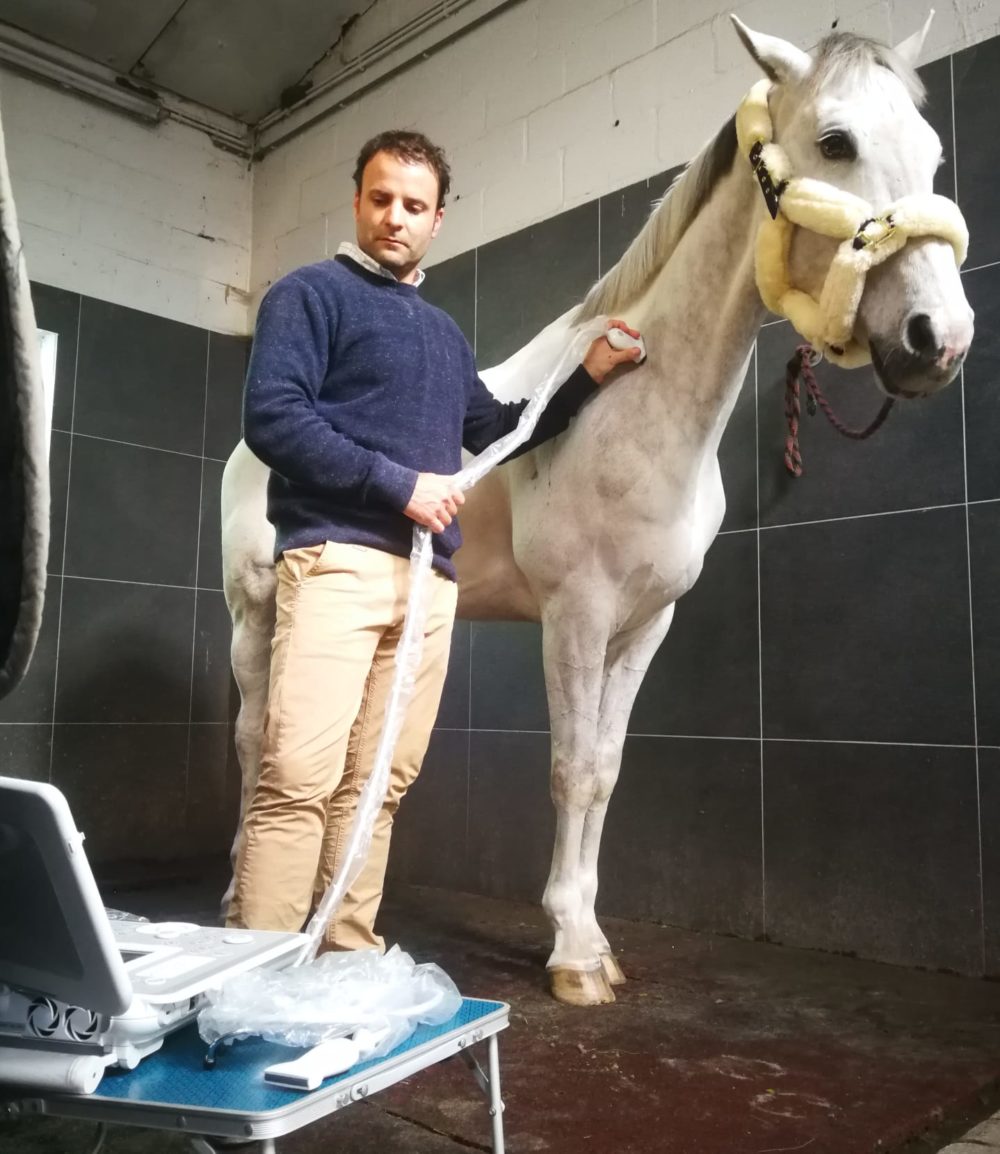
No Comments